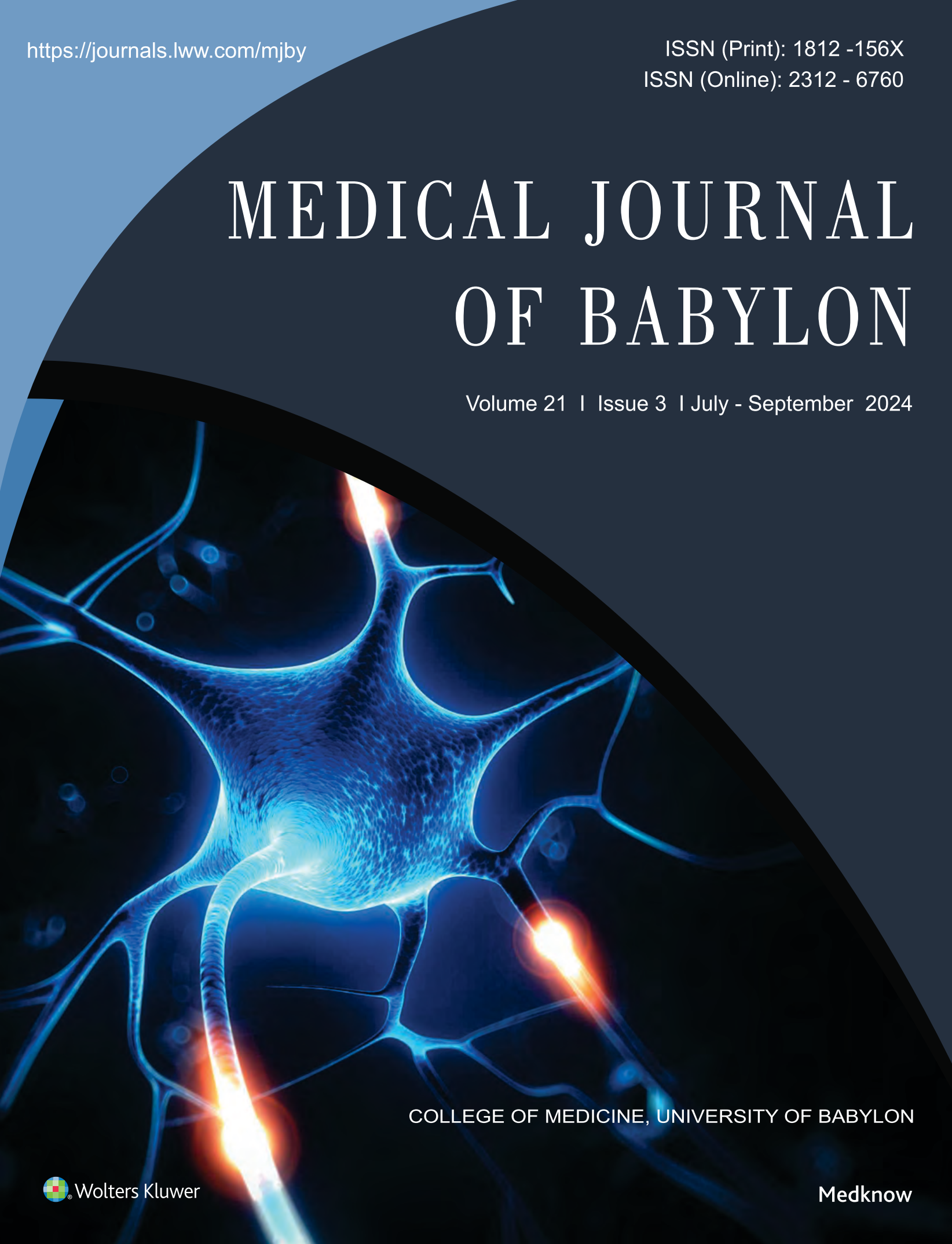Abstract
Abstract:
The size and shape of the arches have considerable implications in orthodontics diagnosis and treatment
planning, affecting the space available, dental esthetics, and stability of the dentition. From the dental cast, one
can analyze tooth size and shape, alignment and rotations of the teeth, presence or absence of teeth, arch form
and symmetry, and arch width and occlusal relationship. This study was performed using dental casts for upper
and lower arches of a total of 38 subjects with class II, division 1 malocclusions (17 males and 21 females) and
of 40 normal class I subjects (20 males and 20 females) of Iraqi adult samples aged (14-24 )in Hilla city. The
dental and arch width dimensions measured were intercanine, intermolar, and molar alveolar in both arches to
compare the transverse dimensions of the dental and alveolar arches of class II malocclusion groups with
normal class I occlusion subjects and independent-samples t-test was applied for comparisons of the groups.
The finding from this investigated indicated that, (1) there were no significantly differences in all measurements
between class I and class II overall samples (2) there were no significantly differences in all measurements
between class I and class II male samples except for mandibular inter canine widths (L3-3) were significantly
larger in class II than in class I male samples (3) there were no significantly differences in all measurements
between class I and class II female samples except for mandibular molar alveolar widths (LA6-6) were
significantly larger in class II than in class I female samples (4) most of the dental and alveolar widths
measurements in overall, male and female class II samples were insignificantly slightly larger than in class I
overall, male and female samples. These indicates that there were no posterior crossbite tendency in the class II
groups .
The size and shape of the arches have considerable implications in orthodontics diagnosis and treatment
planning, affecting the space available, dental esthetics, and stability of the dentition. From the dental cast, one
can analyze tooth size and shape, alignment and rotations of the teeth, presence or absence of teeth, arch form
and symmetry, and arch width and occlusal relationship. This study was performed using dental casts for upper
and lower arches of a total of 38 subjects with class II, division 1 malocclusions (17 males and 21 females) and
of 40 normal class I subjects (20 males and 20 females) of Iraqi adult samples aged (14-24 )in Hilla city. The
dental and arch width dimensions measured were intercanine, intermolar, and molar alveolar in both arches to
compare the transverse dimensions of the dental and alveolar arches of class II malocclusion groups with
normal class I occlusion subjects and independent-samples t-test was applied for comparisons of the groups.
The finding from this investigated indicated that, (1) there were no significantly differences in all measurements
between class I and class II overall samples (2) there were no significantly differences in all measurements
between class I and class II male samples except for mandibular inter canine widths (L3-3) were significantly
larger in class II than in class I male samples (3) there were no significantly differences in all measurements
between class I and class II female samples except for mandibular molar alveolar widths (LA6-6) were
significantly larger in class II than in class I female samples (4) most of the dental and alveolar widths
measurements in overall, male and female class II samples were insignificantly slightly larger than in class I
overall, male and female samples. These indicates that there were no posterior crossbite tendency in the class II
groups .
